
James Fenimore Cooper was an American writer of the first half of the 19th century, whose historical romances depicting colonial and indigenous characters from the 17th to the 19th centuries brought him fame and fortune. He lived much of his boyhood and the last fifteen years of life in Cooperstown, New York, which was founded by his father William Cooper on property that he owned. Cooper became a member of the Episcopal Church shortly before his death and contributed generously to it. He attended Yale University for three years, where he was a member of the Linonian Society.
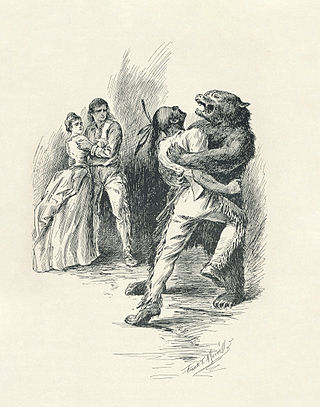
The Last of the Mohicans: A Narrative of 1757 is an historical romance novel written by James Fenimore Cooper in 1826.

The Leatherstocking Tales is a series of five novels by American writer James Fenimore Cooper, set in the eighteenth-century era of development in the primarily former Iroquois areas in central New York. Each novel features Natty Bumppo, a frontiersman known to European-American settlers as "Leatherstocking", "The Pathfinder", and "the trapper". Native Americans call him "Deerslayer", "La Longue Carabine", and "Hawkeye".

The Pioneers, or The Sources of the Susquehanna; a Descriptive Tale is a historical novel by American writer James Fenimore Cooper. It was the first of five novels published which became known as the Leatherstocking Tales. Published in 1823, The Pioneers is the fourth novel in terms of the chronology of the novels' plots.

The Pilot: A Tale of the Sea is a historical novel by James Fenimore Cooper, first published in January 1824. Its subject is the life of a naval pilot during the American Revolution. It is often considered the earliest example of nautical fiction in American literature.
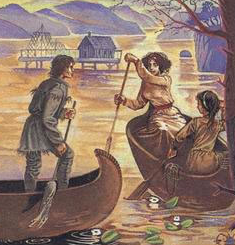
Nathaniel "Natty" Bumppo is a fictional character and the protagonist of James Fenimore Cooper's pentalogy of novels known as the Leatherstocking Tales.
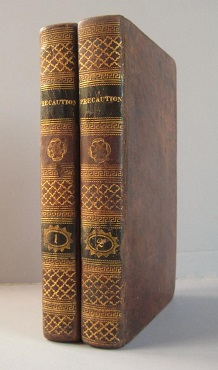
Precaution (1820) is the first novel by American author James Fenimore Cooper.

The Monsters of Templeton is a dramatic novel written by Lauren Groff. Groff was born and raised in Cooperstown, New York. The name Templeton draws from the name devised for the town by James Fenimore Cooper, Cooperstown's most renowned author, known for The Leatherstocking Tales. Groff draws in many of the legends of Cooperstown, especially those crafted by Cooper himself, and ties them together over the expanses of time, then weaves them in with fictional modern-day events. The book was released to great critical acclaim.
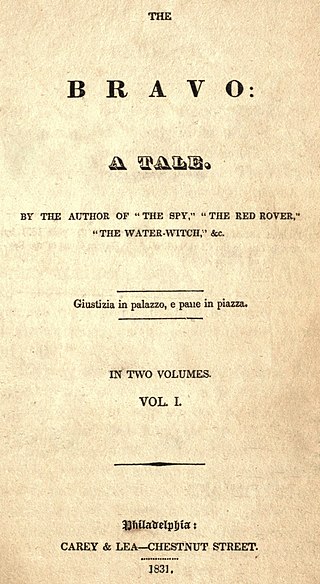
The Bravo is a novel by James Fenimore Cooper first published in 1831 in two volumes. Inspired by a trip to Europe where he traveled through much of Italy, the novel is set in Venice. The Bravo is the first of Cooper's three novels to be set in Europe. This group of three novels, which one critic would call Cooper's "European trilogy", include The Heidenmauer and The Headsman. Like his other novels set in Europe, The Bravo was not very well received in the United States. The book largely focuses on political themes, especially the tension between the social elite and other classes.
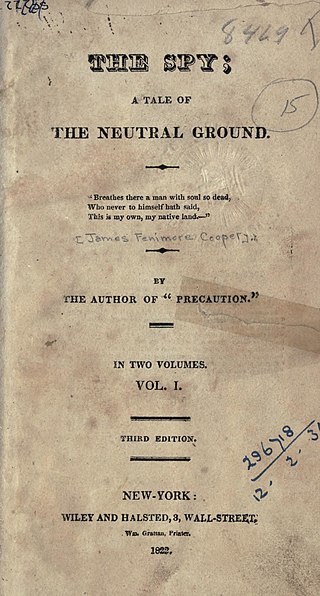
The Spy: a Tale of the Neutral Ground is a novel by American writer James Fenimore Cooper. His second novel, it was published in 1821 by Wiley & Halsted. The plot is set during the American Revolution and was inspired in part by the family friend John Jay. The Spy was successful and began Cooper's reputation as a popular and important American writer.
Afloat and Ashore is a nautical fiction novel by James Fenimore Cooper first published in 1844. Set in 1796–1804, the novel follows the maritime adventures of Miles Wallingford Jr., the son of wealthy New York landowners who chooses to go to sea after the death of his parents. The novel ends abruptly part way through, and is followed by what critic Harold D. Langely called a "necessary" sequel which resolves many thematic and plot elements. The novel is partially autobiographical, based in part on Cooper's own experiences as a sailor, and is his first full-length novel to fully employ a first-person narrative.

Mercedes of Castile; or, The Voyage to Cathay is an 1840 historical novel by James Fenimore Cooper. The novel is set in 15th-century Europe, and follows the preparations and expedition of Christopher Columbus westward to the new world.
The Monikins is an 1835 novel, written by James Fenimore Cooper. The novel, a beast fable, was written between his composition of two of his more famous novels from the Leatherstocking Tales, The Prairie and The Pathfinder. The critic Christina Starobin compares the novel's plot to Jonathan Swift's Gulliver's Travels. The novel is a satire, narrated by the main character, the English Sir John Goldencalf. Goldencalf and the American captain Noah Poke travel on a series of humorous adventures to an Antarctic archipelago inhabited by a race of civilized monkeys.

The Water-Witch is an 1830 novel by James Fenimore Cooper. Set in 17th-century New York and the surrounding sea, the novel depicts the abduction of a woman, Alida de Barbérie, by the pirate captain of the brigantine Water-Witch, and the subsequent pursuit of that elusive ship by her suitor, Captain Ludlow.
Satanstoe is an 1845 novel by the early American novelist James Fenimore Cooper. The novel, sometimes listed with the alternate title The Family of Littlepage or The Littlepage Manuscripts, is the first of a three novel cycle, followed by The Chainbearer and The Redskins. The novel is a fictional autobiography which explores the 18th century colony of New York.
The Two Admirals is an 1842 nautical fiction novel by American author James Fenimore Cooper. The novel was written after the Leatherstocking Tales novel The Deerslayer. Set during the 18th century and exploring the British Royal Navy, Cooper wrote the novel out of encouragement of his English publisher, who recommended writing another sea novel. Cooper had originally intended to write a novel where ships were the main characters, though eventually decided not to. The novels is one of three novels which Cooper would revise for editions following their first printing, the other two being The Pathfinder and Deerslayer.
Autobiography of a Pocket Handkerchief is a serial novel by James Fenimore Cooper first published by Graham's Magazine in 1843. The novel explores the upper crust of New York Society from the perspective of a woman's handkerchief.
Wyandotté is a historical novel published by James Fenimore Cooper in 1843. The novel is set in New York state during the American Revolution. The main character of the novel is an Indian, "Saucy Nick", also called Wyandotté, whose depictions violate stereotypes of Native Americans.

The Sea Lions; Or, The Lost Sealers is an 1849 sea novel by James Fenimore Cooper. The plot revolves around two sealers stranded in the Antarctic ice. The novel was first published in two volumes, by Stringer & Townsend. Critic W.B. Gates described the novel as taking inspiration from Charles Wilkes's Narrative of the United States Exploring Expedition of the Years 1838-1842.
The Wing-and-Wing; Or, Le Feu-Follet is an 1842, sea novel by the American author James Fenimore Cooper. It includes a thematic interest in religiosity and faith. The novel also introduces metacriticism into Cooper's sea fiction, as does The Sea Lions, unlike earlier novels which typically also focused on nautical and nationalist themes.













